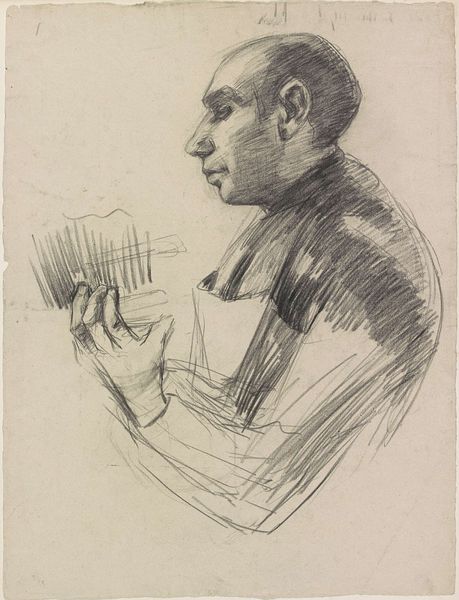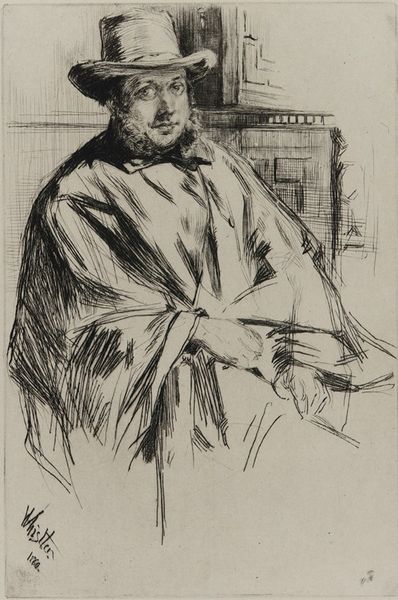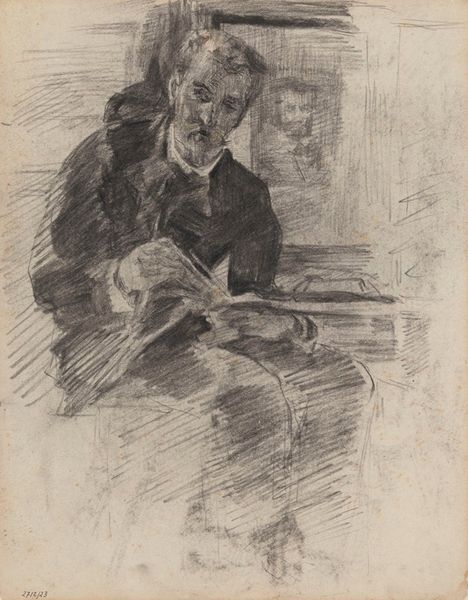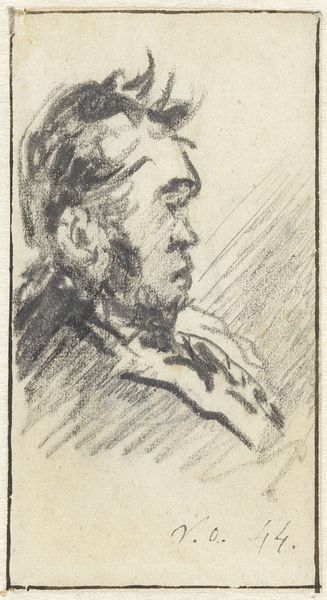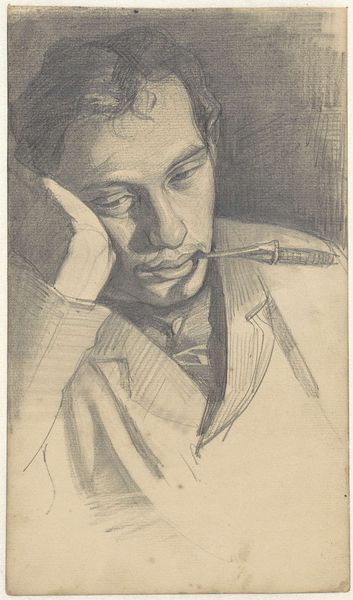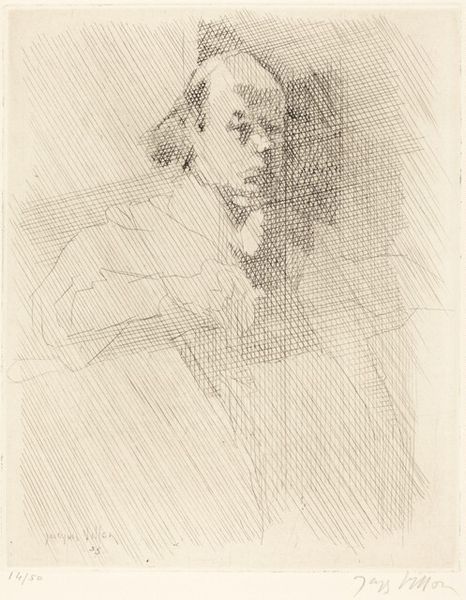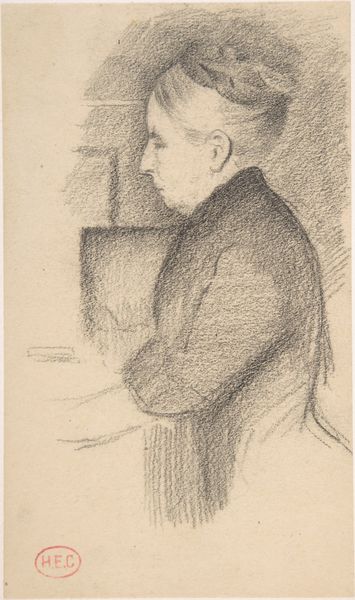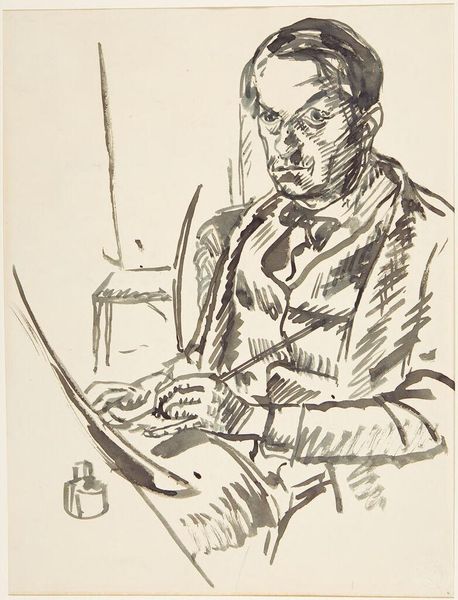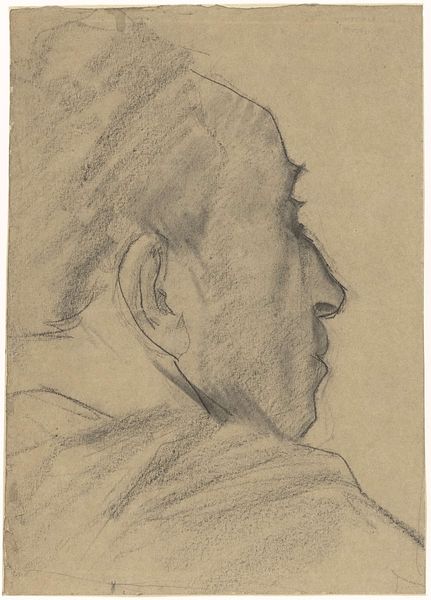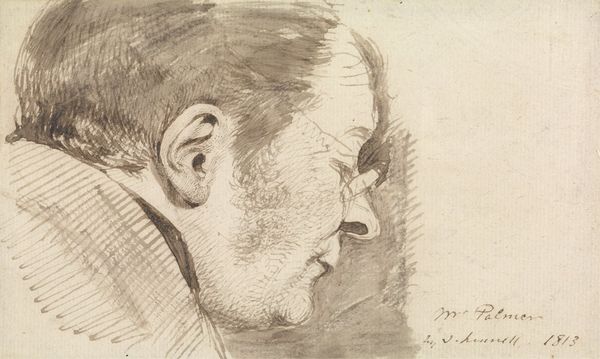
drawing, pencil
#
portrait
#
drawing
#
impressionism
#
pencil drawing
#
pencil
#
portrait drawing
#
modernism
#
realism
Dimensions: height 755 mm, width 548 mm
Copyright: Rijks Museum: Open Domain
Curator: This pencil drawing is titled "Blinde borstelmaker," or "Blind Brush Maker," attributed to Anthon Gerhard Alexander van Rappard, dating from between 1868 and 1892. Editor: It’s the posture that strikes me first. His closed eyes and head angled slightly downwards… It conveys such focused introspection. Almost saintly in its concentration. Curator: Rappard’s social realism often brings to light the realities faced by marginalized individuals, and in that way it echoes some of Daumier’s critiques. The closed eyes, here, obviously highlight his lack of sight, while his dedication to his work as a brush maker is highlighted through the strong detail on his hands. Considering its time of creation, do you see a particular emphasis emerging on notions of labor and disability? Editor: Absolutely. His hands, although not in perfect detail, are positioned centrally, capturing his connection to craft. Brushes signify so much in cultural memory – application, precision, a transfer of meaning from one place to another. The visual weight rests entirely on the tools of his trade and his ability to fashion something, regardless of his personal circumstance. Curator: The historical context underscores the vulnerability of blind workers in that era, given limited social safety nets, as his identity is entwined with that act of creation.. Rappard draws attention to societal barriers and questions of inclusion and marginalization of individuals. I am intrigued if you also see other interpretations of "blindness" represented here. Editor: Perhaps a blindness to the beauty and abundance of the outside world, that elevates the sense of touch and feeling as ways of experiencing something beyond immediate sight? And maybe blindness as a metaphor for the human condition—searching for answers, creating order, but often feeling our way forward in the dark. Curator: That emphasis on the metaphor definitely adds nuance. The artist's own social consciousness perhaps influenced that duality you pointed out. Rappard subtly pushes us to challenge our perceptions. Editor: It really adds another layer, doesn't it? An ability to transcend the constraints imposed on our perceptions by dominant narratives of sight and material well-being. It truly invites a reassessment.
Comments
No comments
Be the first to comment and join the conversation on the ultimate creative platform.
